Spring 2017 G&G: Brazil’s Diamond Production, Cuprian Liddicoatite, Silicon in Corundum, and Tucson Coverage
May 8, 2017

From Brazilian diamonds and Japanese jadeite to Indian iridescent quartz and Polish by-product zincite, a world of wide-ranging topics is covered in the Spring 2017 issue of Gems & Gemology. The issue looks at historical and unexpected sources of gemstones, plus surprising discoveries revealed through advanced chemical analyses. News and updates from the annual Tucson gem shows and our multiple-choice Challenge quiz are also included in the Spring issue.
BRAZILIAN DIAMONDS: A HISTORICAL AND RECENT PERSPECTIVE
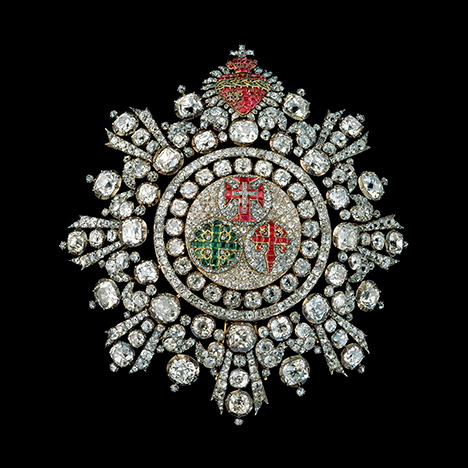
made in 1789, and is now part of the crown jewelry collection of the Ajuda National
Palace in Lisbon. The badge consists of Brazilian diamonds as well as emeralds and
rubies, and it is designed in a way to conceal the metal mounting and emphasize the
gems. Photo by Manuel Silveira Ramos, courtesy of the Ajuda National Palace.
Brazil is known for its wealth of colored stones, but it was at one time the world’s leading diamond producer. For three centuries Brazil has supplied a steady, if relatively small, supply of diamonds to the world market. It is also a source of superdeep and fancy-color diamonds and carbonado. In Brazil, diamonds are gathered from alluvial deposits (primarily in Mato Grosso and Minas Gerais), while primary sources remain unknown. Authors Darcy Svisero, James Shigley, and Robert Weldon look at Brazil’s centuries-old diamond production with historical perspective, geological insight, and expectations for future mining.
COPPER-BEARING LIDDICOATITE TOURMALINE
Copper-bearing (Paraíba) tourmaline is usually classified as part of the elbaite species. Recently, 13 cuprian tourmalines submitted to GIA’s Tokyo lab were analyzed with LA-ICP-MS for origin determination. While the origin of the stones remains unknown, Yusuke Katsurada and Ziyin Sun discuss the surprising results that led them to classify the samples as liddicoatite, rather than elbaite.
THE ROLE OF SILICON IN THE COLOR OF GEM CORUNDUM
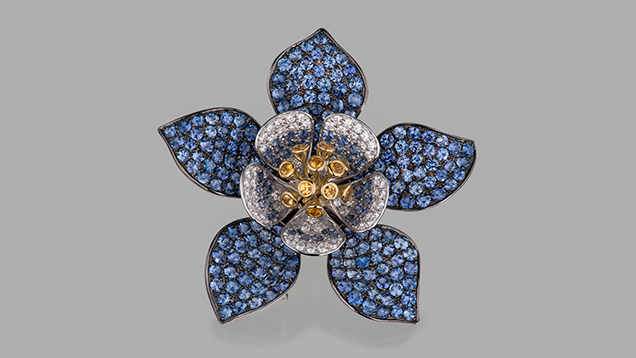
The chemical interactions of silicon, titanium, and magnesium are known to influence the color of gem-quality corundum, but until recently the role of silicon has not been fully understood. John Emmett, Jennifer Stone-Sundberg, Yunbin Guan, and Ziyin Sun explore how ion implant standards and the application of SIMS has led to accurate measurement of silicon in corundum for the first time. This measurement makes clear the important role of silicon in corundum color; the blue of Yogo sapphire from Montana is used to illustrate this discovery.
JAPANESE JADEITE: HISTORY, CHARACTERISTICS, AND COMPARISON WITH OTHER SOURCES

and green colors. This boulder weighs 40.5 kg and measures approximately 39 cm
high, 32 cm long, and 26 cm wide. Photo by Ahmadjan Abduriyim.
Gem-quality jadeite jade has been known from Japan for millennia. In this article, Ahmadjan Abduriyim, Kazuko Saruwatari, and Yusuke Katsurada examine the historical context, chemical composition, and color of Japanese jadeite. They also compare characteristics of samples from the Itoigawa, Omi, and Wakasa regions to jadeite from Burmese, Guatemalan, and Russian deposits.
CAUSES OF IRIDESCENCE IN NATURAL QUARTZ
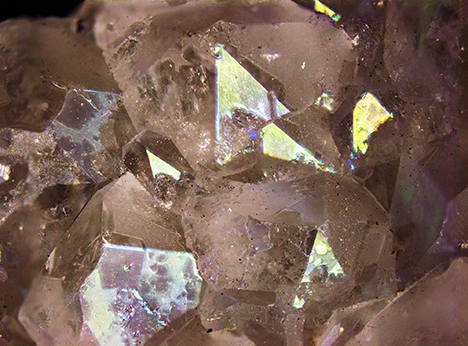
Photomicrograph by Peter J. Heaney; field of view 4.5 mm.
The phenomenon of iridescence in gemstones is caused by either thin films or repetitive substructures. In an exploration of iris quartz specimens from Jalgaon District, India, Xiayang Lin and Peter Heaney discover a ridge and valley structure, produced by differential etching on the material’s minor z face, which produces its iridescent effect.
CHARACTERISTICS OF GEM-QUALITY BY-PRODUCT SYNTHETIC ZINCITE
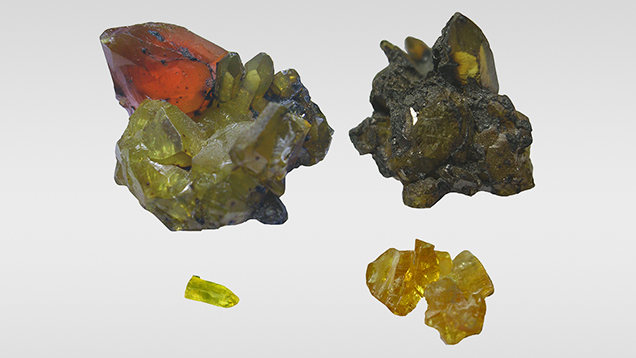
Synthetic zincite has been found in industrial kilns in Poland as a by-product of zinc oxide powder production. This accidental zincite has better transparency and brighter color than its natural counterpart. Ji Zhang, Yujie Gao, and Guanghai Shi examine samples of by-product synthetic zincite from a Polish foundry to establish their distinguishing characteristics, identify their inclusions, and find their cause of color.
LAB NOTES
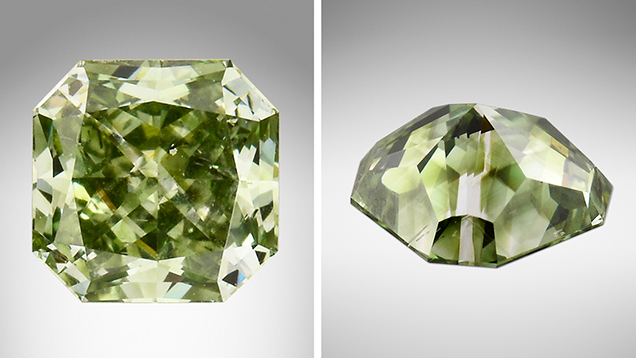
GIA’s gemologists report on notable lab submissions, including a surprising source of green color in HPHT synthetic diamond, a Paraíba tourmaline with an unusual submetallic coating, and a cape diamond showing yellow phosphorescence.
MICRO-WORLD

The inner world of gemstones continues to captivate, and the Spring 2017 section features sapphires showing negative crystals, flame-like structures in precious opal from Ethiopia, and a mysterious inclusion combination in Sri Lankan topaz.
GEM NEWS INTERNATIONAL
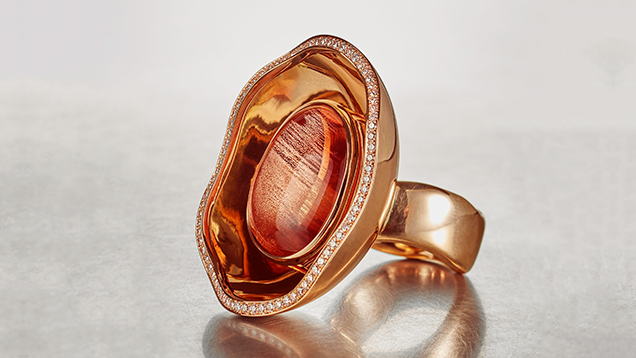
The GNI section contains G&G’s annual coverage of the Tucson gem shows. Highlights include emeralds from a new deposit in Ethiopia and a Burmese gem update following the lifting of U.S. sanctions on Myanmar. Other entries report on the chemical composition of color-change pyrope-spessartine garnet, and a calcite sphere exhibiting strong phosphorescence.
The Spring issue also contains the 2017 Gems & Gemology Challenge. Score 75% or better and you’ll receive a certificate of completion (PDF file); earn a perfect score and your name will be listed in the Fall 2017 issue. Mail-in cards and online entries for the Challenge must be submitted by Friday, August 11, 2017.
Jennifer-Lynn Archuleta is the editor of Gems & Gemology.
.jpg)


